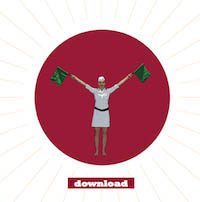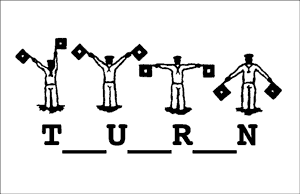i-Phone APP
Send FMS with Flagmessenger

- I can’t help but dream about a kind of criticism that would not try to judge, but bring an oeuvre, a book, a sentence, an idea to life; it would light fires, watch the grass grow, listen to the wind, and catch the sea-foam in the breeze and scatter it. It would multiply, not judgments, but signs of existence; it would summon them, drag them from their sleep. Perhaps it would invent them sometimes – all the better.
Michel Foucault
My choreographies address the relation between of self-perception of the body, and its ‘objective’ materiality. The frictions and tensions between how we feel and experience ourselves, and how we are perceived. Which correspondents on a lot of levels to the relation between emotions and thoughts.
>When we watch performing art, we want to be ‘touched’ our desire is to experience something essentially personal, something genuine and honest. In an attempt to find a valid representation of authenticity, I decided to make improvisation a core feature in my choreographies. In improvisation, we potentially witness and understand ‘on-the-spot” decisions of the performers without feeling fooled. In observing such honest attempts and especially failures, identity is disclosed. To witness and experience failure is for me essential for a deeper understanding of the work. That works best in an environment that is deliberately non-judgemental. To work with improvisation does not mean to abandon craftsmanship. It just requires a different kind of expertise, that focuses rather on the underlying mechanisms that on style or aesthetics.
>To resist categorization and to radically blur the sacred boundaries between disciplines is one of my artistic goals. Art can create an enchanting sense of disorientation. It should never affirm our established mind-set, but make us think, feel and act outside the box. And I am happy when my own work achieves this. In consequence of this it often resists categorization. (Which does not make it easier to sell).
>I work inclusive – in the sense that the created works and practices I create can be executed by everyone for their own benefit and experience. It is about finding a practise, a technique that creates a collective consciousness without employing mechanics of exclusion. In that space, high quality artistic expression can emerge with a minimum hierarchy and violence in the work. However, this does not imply that the structure has to be democratic; it can be directed by individuals.
During Dancing on the Edge 2011, I was invited to give a presentation of my work during a meeting of 'young choreographers'. This was my proposal:
"Here is the place for a presentation of my work. It was tempting to try to impress you with clips, but instead I would like to talk a bit. In the background, you can see some of imagery of my work, so there is something to look at in case I get boring.
I was wondering what is my role here. I am not a real choreographer. Somehow I do not fit. My work is related more to theatre and performance than to dance. And it almost always includes elements of improvisation in language and movement, live music, documentary and science, and – due to my enthusiasm to communicate to the audience – a glance of amateurism. I would love to have a biography that is smooth, but I have one with blank spots, with strange and embarrassing edges. My educational background is a combination of performing arts, dance and mathematics. In the moment I am somewhat perceived as an experimental maker, an upcoming choreographer. As two days ago we had our premiere of THE CRITICAL PIECE, a show dealing with the issue of dance criticism. Let me share some thoughts about that.
Within the last decades, being an “experimental maker”, an upcoming choreographer has become a brand, a sort of trademark. It’s a well-established category in a well-established so-called alternative segment of the market of the dance. And on this market, the middleman – the producers, the programmers, the directors, the theorists and the critics are the ones who are discussing the changing value of artists. They search for who is hip, sexy and up to date, for what’s hot and what’s not. And we are the meat that is being sold and selling itself there. We are the ones winning the prizes, showing our pieces in the trendy locations, touring in fancy places, and befriending ourselves with influential people. Everyone can follow our progress on facebook. Or maybe if we are less fortunate we have to work in a shop to finance our choreographic work. But that information actually we do not put on facebook. We have to be selective about the information we share -those are the conditions of our success that seem almost natural to us. But they are not.
I think the stage is always related to fear. As German Director Schlingensief put it: “What is theatre? Theatre is: People on a stage who are afraid to do mistakes”. As performers we are experts in dealing with our fear, in developing strategies to work with it as material. A lot of times showing dance technique on stage is a strategy to avoid confrontation with personal fear. Even though we hardly talk about it and pretend it is not there. That has to do with the conditions of success. That is why we don’t post our artistic failures on facebook. Real fear is not sexy. But I think we all agree that failure is essential to an artistic process. So in this necessity of selling our work, I wonder what are our possibilities to meet and discuss. There is this moment in almost every performance, which I love. When the lights have gone out and it is clear we reached the end. But still nothing is happening, until someone starts clapping. This moment is for me always one of the most beautiful experiences in theatre. The funny thing is, that for us performers or makers this could be a moment of fear – because the reactions after – the clapping of our audience – will indicate whether our show communicated successfully or not. But the point is, that in that moment we are not afraid. On the contrary. We are relieved. Because we did what we did, and it is not up to us anymore. And we breathe together with the audience in the silence. What interest me, is this enormous freedom in that moment. And I think it has to do with the fact that we finished, but there has not been a comment or a judgment yet. We are in a situation of suspended judgment.
I think this could be the space for us makers to meet: To look at the work of each other, to take it in and reflect on it while suspending our judgement. I am dreaming of a theatre that is entertaining and inspiring, in which we do not have to present skills. In which nobody has to do anything special, and in which we can be transparent about our fears and our joys. It is that what makes it personal. Thank you for your attention"
Since January 2016 I mainly focus on my work as Somatic Coach in Berlin, Wedding
This work is based on the education I received in the Pantarei Approach and the Grinberg Method, with influences from Dance, Yoga and Pilates. Pantarei is an experiential body-based somatic approach, that uses a combination of respectful touch and verbal communication, related to the client’s experience and what is felt in the client’s body by the practitioner. In one on one sessions, Pantarei practitioners guide the client through touch and verbal communication to help them articulate and explore each person’s individual experiences and goals.During the annual Spring Forward festival 24-27 April 2014 in Umeå Aerowaves piloted a new project called Springback . I was part of a group of 9 writers mentored by professional critics Donald Hutera (The Times), Sanjoy Roy (The Guardian) and Margareta Sörenson who were challenging to come up with five short reviews of 150 words and one longer opinion piece . Here are my results:
Qui Ora – Claudia Catarzi
Claudia Catarzi’s 15 minutes solo Qui, Ora opens with a rhythm-based sequence in a grey raincoat, with the amplified sound of the wrinkling costume having a mesmerizing effect upon the audience. On a bare stage and with almost no music she progressively unfolds her talents with extreme precision and a breathtaking ability to stop right in the middle of a rapid motion. Catarzi’s choices appear deliberate, as if the pop up references to air guitars and jumping rope; and the lonesome cowboy Cash song seem to be important markers of a personal journey. But unfortunately the underlying meaning is not conveyed, making the dance appear rather hermetic, as if her excellent technique somehow keeps her from daring to communicate more directly with the audience.
Softer Swells
For her solo Softer Swells, Aoife McAtamney has chosen an exciting setup: Seated on the big stage in a u-shape, facing the stalls we instantly feel exposed to everything yet to come. No fourth wall here, no added light or sound, only a shared space for her to dance (and sing) and us to watch.
With a powerful starter of a Siren like song she drags us into her world of disjointed movements, singing and sometimes confrontationally direct contact. This strong performer obviously feeds her journey from personal memories to spin a red thread of fragmented sounds and distorted movements that evoke associations of more universal aspects of relationships. We witness adoration, desire and domination that transform into each other and eventually routine also take its toll.
please be gentle
Ever had a shivering sensation of pleasure for about 20 minutes? The two male performers work hard to execute this task while repeatedly passaging through a series of symbiotic positions of increasingly physical contact and short moments of release: A hug, a bridge, intertwined legs, sitting close. A clever physical depiction of the male (or gay) dilemma: That the hard labour aimed to produce a state of vulnerability paradoxically destroys any possibility of such actually happening. However, the overall sensation of holding back seems to indicate the ambition of a choreographer keeping the grip onto the work a bit too tight, limiting the space for us and the performers to fully acces the idea. There’s a daring fragility here whose potential could be explored much further.
SKIN me
Contemporary dance events often have a sensation of emotional restriction: stone faced dancers executing ideas of ambitious choreographers, watched by stone faced spectators, sophisticatedly reflection upon this execution but barely able to give a genuine response.
Skin Me refreshingly shakes up those parameters by letting it all hang out - metaphorically and literally. Mainly entertainment, but witty and well woven, and overall a celebration of the daring mutual influences that the performers allow themselves to have upon each other. Everything seems to be in flux, negotiable, happening on the spot, decisions taken by the collective not on the base what is most artistic but what creates the most pleasure. Watching it felt like meeting an old friend again after a long time.
Aerowaves Opinion Piece
First impressions are often based on only superficial observations and might quickly lead to judgment – about a person as well as an artwork. Aerowaves was an extremely inspiring and exhausting marathon with about 25 performances in three days, but instead of leading to a series of quick judgments, the effect of the choreographic overkill was more a kind of pleasant relaxation. As if the limitations of time and the intensity of the whole experience created a mindset that refrained from jumping to quick conclusions. In that state, I was not just watching the pieces, but started to meet them from within, to befriend them and experience them as a string of short and dense encounters that opened my perceptions to the artistic quality and the power of creativity. Art is good. The more the better.
Springforward successfully facilitated exposure for choreographic works and created opportunities to sell. But it lacks a shared content-orientated collective artistic discussion. Collective after talks, feedback sessions and critical discussions are a vital tool to challenge the choreographer’s artistic approaches. In order to develop dance beyond what we already know, we need to speak collectively about our specific experiences as choreographer, spectator, programmer, critic, we need to find space to share our observations, our insecurities, our wishes, our doubt, our disagreements, our failures. The process of writing about the performance gave space to reflect on the events from a distance about the event as a whole, but I would have loved to find that within the event. So let me share some critical remarks about the way contemporary dance was represented in the festival.
The range of body types that we saw on stage was rather limited. If the pieces tried to address a variety of issues in a merely universal manner, and are meant to represent the broad array of contemporary dance, why does it seem that the dancing bodies on stage still (or again?) fit in certain categories of normality? There was an almost overwhelming presence of youthful, slim and well trained, beautiful bodies, but where was the imperfect, the old, the transgressive?
Choreography was mainly approached in a traditional manner: dance as the execution of a (mainly visual or aesthetic) concept, conceived and shaped through the inspiration of a choreographer into a score of prefixed movements that become staged in a traditional, frontal set-up. Hmmm. What about contemporary dance as a movement practice, as a live-research, a laboratory or a transference tool for knowledge? Or choreography as an ‘open format’ with mechanisms that become transparent during their execution? Not a single piece crossed the boundaries between spectator and performer, between watching and participating.
And on the level of content: where were the challenging topics? It surely can be interesting to explore formal notions of repetition or to observe people in their twenties to struggle with their identity, but why the shyness to show works that seriously dare to touch issues of nationalism, race, structural violence? Why not take such risk even if you fail with it?
-
To be contemporary means to return to a present where we have never been. It is like being in time for an appointment that one cannot but miss.
Giorgio Agamben
-


